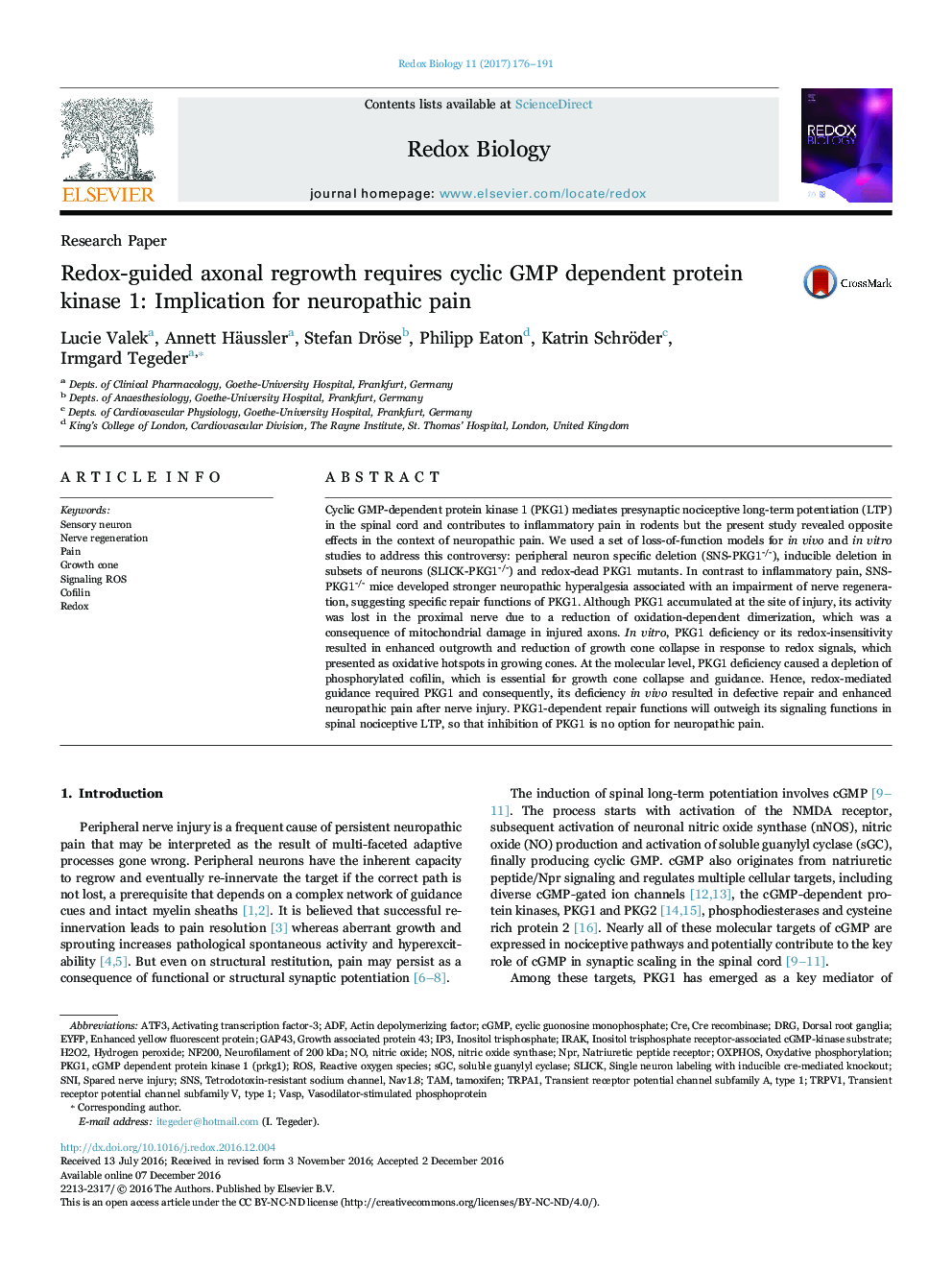| Article ID | Journal | Published Year | Pages | File Type |
|---|---|---|---|---|
| 8287194 | Redox Biology | 2017 | 16 Pages |
Abstract
PKG1 is localized in the tip of the spiky growth cone and is activated by redox-mediated dimerization, or by cGMP, the latter released after stimulation of natriuretic peptide receptors (Npr). Redox signals are generated in the growing tip and trigger growth cone collapse. The redox-evoked collapse involves PKG1-dimerization/autoactivation, subsequent phosphorylation of ADF/cofilin and finally, P-cofilin-mediated actin depolymerization. On collapse PKG1 retracts from the cone and returns on natriuretic peptide mediated attraction. The cycle ensures correct guidance of the growing cone.208
Keywords
EYFPIP3Inositol trisphosphateNF200Gap43NOScGMPOXPHOSSNIATF3SGCSNSDRGNPRCREVASPTRPV1TRPA1ADFROSHydrogen peroxideSpared nerve injuryNerve regenerationTAMtamoxifenSoluble guanylyl cyclasePainRedoxgrowth associated protein 43Slickactin depolymerizing factorIRAKVasodilator-stimulated phosphoproteinActivating transcription factor-3Growth coneSensory NeuronNitric oxidenitric oxide synthaseH2O2enhanced yellow fluorescent proteinCre recombinaseCofilindorsal root gangliaReactive oxygen speciesnatriuretic peptide receptor
Related Topics
Life Sciences
Biochemistry, Genetics and Molecular Biology
Ageing
Authors
Lucie Valek, Annett Häussler, Stefan Dröse, Philipp Eaton, Katrin Schröder, Irmgard Tegeder,
